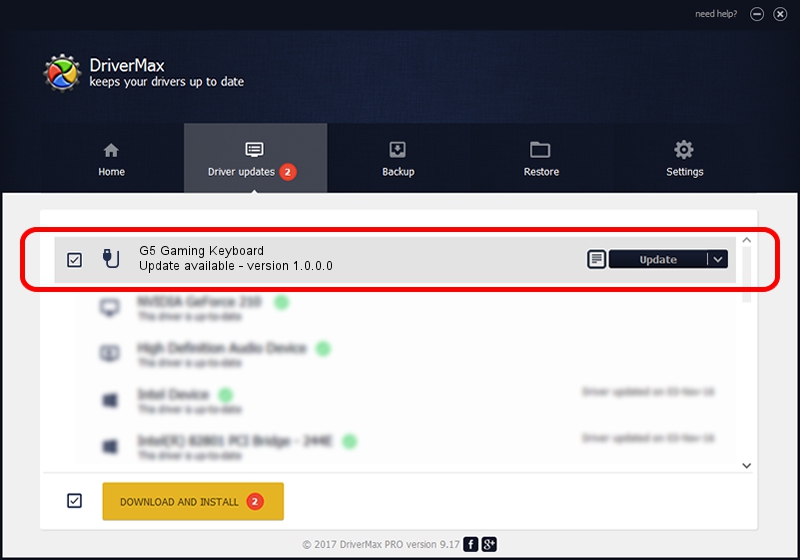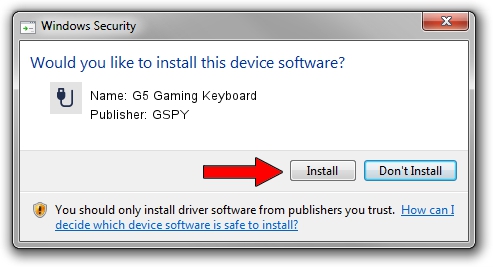The HID class driver transparently manages and routes all communication between upper-level drivers and applications and the underlying input devices that support HID collections. It manages the different data protocols that are used by different input devices and input queues that support more than one open file on the same HID collection. Pre-Owned Titleist Golf TS3 Driver $0.00 100% Off! Titleist 910H Fairway Wood Hybrid Hybrid – 17° Mens/Right $39.98 7% Off. To find the latest driver for your computer we recommend running our Free. Driver Download. Vendor: GSPY. Product: Virtual HID Minidriver Collection. Hardware. Drivers: INTEL i3 Installed 7 from 8 and cannot find driver for Network Adapter Hi. I recently downgraded my pc from 8 to 7 and now i cannot connect to internet due the absence of a network adapter drivers and other problems with drivers. Thank you for the help! Drivers: How to find out the driver version of an already installed printer?
-->Human Interface Devices (HID) is a device class definition to replace PS/2-style connectors with a generic USB driver to support HID devices such as keyboards, mice, game controllers, etc. Prior to HID, devices could only utilize strictly-defined protocols for mice and keyboards. Hardware innovation required either overloading data in an existing protocol or creating non-standard hardware with its own specialized driver. HID provided support for these “boot mode” devices while adding support for hardware innovation through extensible, standardized and easily-programmable interfaces.
HID devices today include a broad range of devices such as alphanumeric displays, bar code readers, volume controls on speakers/headsets, auxiliary displays, sensors and many others. Many hardware vendors also use HID for their proprietary devices.
HID began with USB but was designed to be bus-agnostic. It was designed for low latency, low bandwidth devices but with flexibility to specify the rate in the underlying transport. The specification for HID over USB was ratified by the USB-IF in 1996 and support over additional transports followed soon after. Details on currently supported transports can be found in HID Transports Supported in Windows. 3rd-party, vendor-specific transports are also allowed via custom transport drivers.
HID Concepts
HID consists of two fundamental concepts, a Report Descriptor, and Reports. Reports are the actual data that is exchanged between a device and a software client. The Report Descriptor describes the format and meaning the data that the device supports.
Reports
Applications and HID devices exchange data through Reports. There are three Report types: Input Reports, Output Reports, and Feature Reports.

| Report Type | Description |
|---|---|
| Input Report | Data sent from the HID device to the application, typically when the state of a control changes. |
| Output Report | Data sent from the application to the HID device, for example to the LEDs on a keyboard. |
| Feature Report | Data that can be manually read and/or written, and are typically related to configuration information. |
Each Top Level Collection defined in a Report Descriptor can contain zero (0) or more reports of each type.
Usage Tables
The USB-IF working group publishes HID Usage Tables that are part of the Report Descriptors that describe what HID devices are allowed to do. These HID Usage Tables contain a list with descriptions of Usages, which describe the intended meaning and use of a particular item described in the Report Descriptor. For example, a Usage is defined for the left button of a mouse. The Report Descriptor can define where in a Report an application can find the current state of the mouse’s left button. The Usage Tables are broken up into several name spaces, called Usage Pages. Each Usage Page describes a set of related Usages to help organize the document. The combination of a Usage Page and Usage define the Usage ID that uniquely identifies a specific Usage in the Usage Tables.
See also
USB-IF HID Specifications.
How-To Geek Forums / Windows XP
(Solved) ~ Human Interface Device troubles
(9 posts)Any Time I try to use a USB mouse with my notebook (IBM Thinkpad T60) it has an error. When I look via the device manager, the following is shown 'Windows cannot load the device driver for this hardware. The driver may be corrupted or missing. (Code 39)'
I have tried installing many different HID drivers but nothing ever works.
I know its not a USB related error because other USB devices work. Its only with HID devices.
Any Ideas how i can solve it? Any help appreciated!!!!

Gsp Driver's License
steviehouse,
There is something in this article about having to DISABLE the existing internal pointing devices.
http://www-307.ibm.com/pc/support/site.wss/MIGR-4YQKLP.html
Check it out PLUS also your Manual.
Kindest Regards,
Rick P.♦:)
I tried what is said at that link and checked my manual and nothing worked. All the pointing device setting were correct anyway.
I found on some forums about trying to start up in safe mode, uninstalling the driver, then restarting and installing again but that didnt work either.
I'm really frustrated that I can't use a mouse
steviehouse,
Yes I know what you mean as when friends bring their Laptops over to the house, I have to use a mouse because of trouble in my right hand.
Have never experienced the problem you are having with the mouse and other HID items but feel sure other members may have a solution.
Sorry I can't help.
Please Post Back with an (OK) so that OTHERS may jump in on the topic and provide an answer.
Kindest Regards,
Rick P.♦:)
steviehouse, hello. Does this happen with *any* USB connected mouse? How many have you tried? Are they wired or wireless mouses?
When you say that you have tried different HID drivers, where are you getting these drivers from? Most HID devices I have ever used just work with Windows using the pre-installed Microsoft drivers and no additional drivers are needed.

Finally, follow the steps in the following article to show hidden devices and delete every hidden (greyed out) device under Mouse and Pointers and Keyboards. Even though the article says 'Vista', it works the same in XP.
https://www.howtogeek.com/howto/windows-vista/remove-old-drivers-after-upgrading-to-new-hardware/

Hi Scott,
I have tried both wired and wireless USB mice and none of them work (5 in total).
I am aware that it should work with the pre installed drivers but It didnt so I did searches online for HID drivers and tried some that I could find online.
I have actually solved this problem myself now. :)
I searched in google for 'Windows cannot load the device driver for this hardware. The driver may be corrupted or missing. (Code 39)' and found a number of forums pointing to the Registry Keys.
Although the forums were talking about devices other than USB (CD/DVD drives for example) I found repeated comments about UpperFilters and LowerFilters registry values. The forums were saying to delete the UpperFilters and LowerFilters values.
I searched in the Registry for the keys for HID and I found an UpperFilters value. I therefore deleted this value and restarted the computer. Low and Behold, any USB mouse I attached, worked!
Thanks for the possible solutions above.
steviehouse,
I had the EXACT same problem (error code 39, tried several mouses, many drivers etc.) : all of a sudden, my old and usual USB mouse stopped functioning on my ThinkPad T60. How weird ?!
I had been unlucky troubleshooting until I read your post, and I confirm it works !! There was one UpperFilters in a HID key, I deleted it, rebooted and it did the trick.
WOW... MANY thanks for the tip.
Coping this from a different post: This solved the issue for me
MycomputerHKEY_Local_MachineSystemCurrentControlSetControlClass-{745A17A0-74D3-11D0-B6FE-00A0C990F57DA}- and I deleted the upperfilter file
Just plugged out and plugged back in the USB for my mouse and it worked!
Gsp Drive Shaft Catalogue
Gsky Drivers
Topic Closed
This topic has been closed to new replies.

Comments are closed.